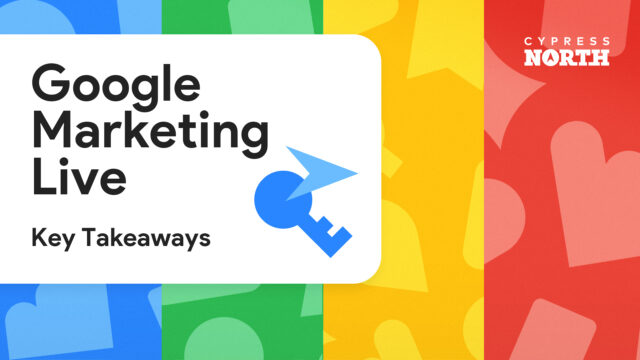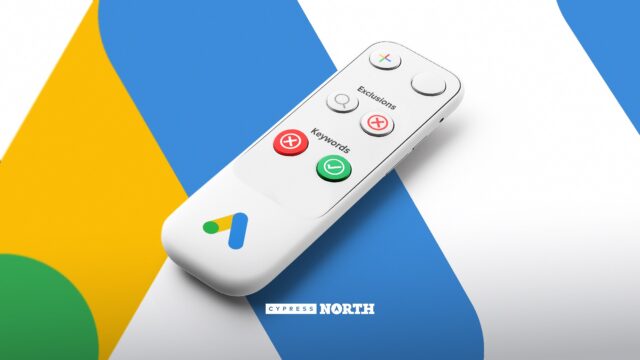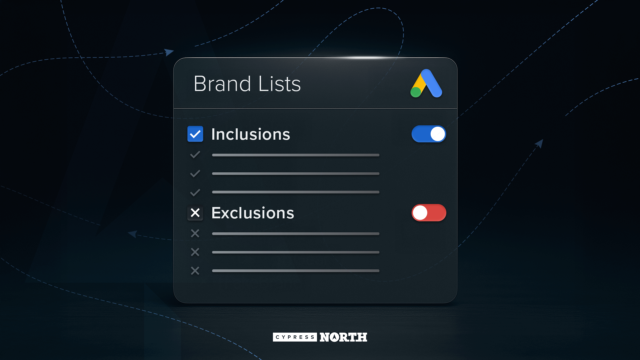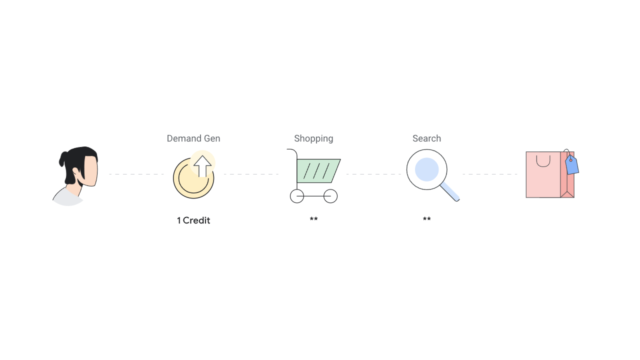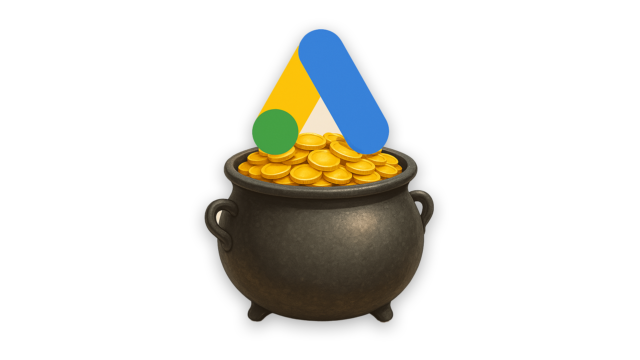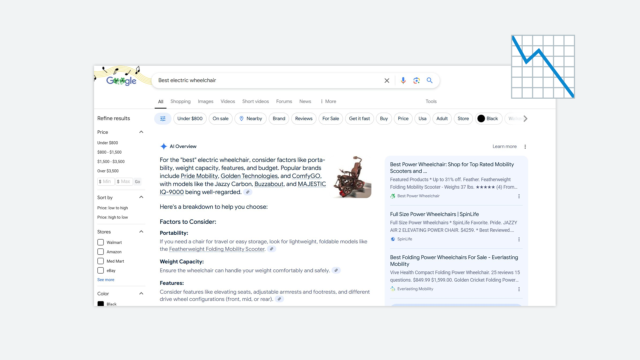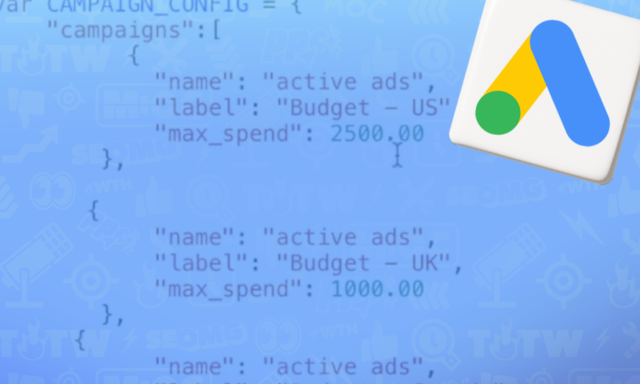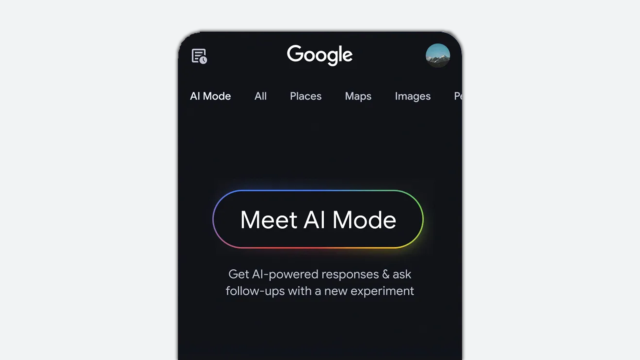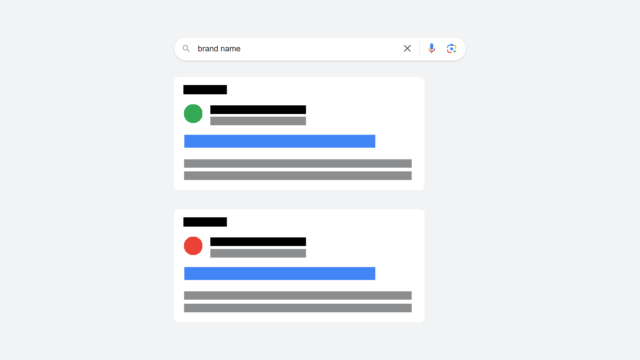How To Properly Perform Statistically Relevant Split PPC Ad Testing

The crux of a solid paid search campaign indubitably is the ad copy that drives the user to make the click. When auditing paid search campaigns from other companies, it is always a shock to see the (lack of) ad testing that is used. An A/B split test is an extremely simple way to test a baseline ad against a new iteration, and use simple statistics and confidence testing to prove a theory with an exact confidence. This is a crucial element that we leverage with client recommendations and tactics -- as facts and science never lie. Want to see how easy it can be to calculate statistical relevancy? Follow along in the steps below.
1. Formulate a Test & Implement
In order to test, we'll need two different versions of an ad to test. More importantly, we need to identify what the success metric is. Maybe it is number of purchases, maybe it's number of clicks. For this example, let's assume that our success goal is a "sign-up" and we are testing the ad copy effects on visitors.We will start with one "championship" ad that is currently active that we'll call "Ad A". The variation will be "Ad B" with all elements the same as "Ad A", except for the ad headline.
2. Ensure You Are Collecting Accurate Data
As any statistician will tell you, the sample that you are using is key to cut down sample error. The goal is to pull our data from an unbiased sample that is representative of the population.
Ad Rotation In Google:
The way that AdWords is set up out of the gate won't serve us in the way we need, as it will try to optimize for clicks. We would rather use a systematic sampling model that will provide us equal results in our test. We recommend using "Rotate indefinitely" for your test within the campaign settings tab in AdWords:
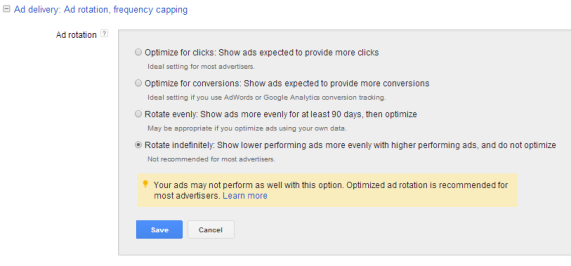
Ad Rotation In Bing:
Like Google, Bing also automatically sets ads to show more often based on clicks. To turn this off you'll need to change each Ad Group by hopping into the Ad Group settings. You'll see the Ad Rotation option:

3. Collect Data
Ahhh, the easy part. Sit back and watch the impressions, clicks and conversions pile up. The size you'll need will depend on how accurate you'd like the test to be. Obviously the more data the better and you can see some tables on error percentages based on differing sample sizes. If you want to project a timeframe required to hit your ideal test sample size, Visual Website Optimizer has a nice free tool to help.
4. Analyze Data
If you aren't a savvy statistician, don't fret. There are plenty of calculators that can help display the data you require. I personally use Thumbtack's free A/B Test calculator for quick comparison. You'll want to insert your number of trials (visitors in this case) to the successes (sign-ups). You can adjust the confidence level if you'd like, but a 95% confidence interval is standard in stats.
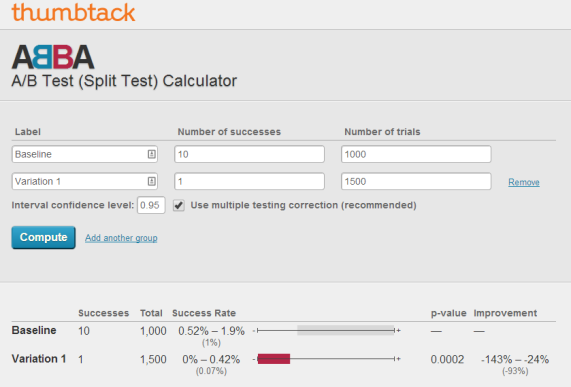
The p-value displays our confidence that the improvement is in fact statistically relevant. The lower the p-value, the higher the confidence. We'd like to have a p-value of between 0.05 and 0.01 for "statistical significance." For the example above we can see a very low p-value that means the tests have reached statistical significance. Seeing that this is statistically relevant, we can then look at the results and the estimated improvement. This test shows that the variation would likely cause a decreased success rate that would actually be anywhere from a 24% - 143% decrease in conversions (with the average conversion decrease of 93%).
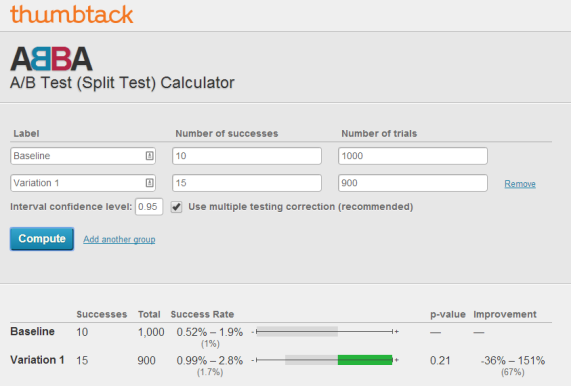
This example however shows that our test is currently not statistically significant as our p-value is a whopping 0.21. There is nothing that can be statistically recommended from this test. So from the two examples, we would strongly recommend keeping the Baseline ad in Test 1 as visitors were 93% more likely to convert, while we would not have any recommendations for the second test. If the success ratios held firm on the second test continue we'd need a little more than 2.5x the sample size to be statistically significant.
And that's it! Not only should this help you make more informed decisions for yourself and clients, but it also an easy method to back-up your work and tactics with science in case a client doesn't agree with your strategy..
Like this? Want more great info? Be sure to follow us on Google+:
Keep up with us on Twitter: Follow @cypressnorth
or of course Instagram and Facebook.
Meet the Author

Greg Finn
Greg is the Head of Performance and Innovation for Cypress North's digital marketing team and one of the founders of our agency. In 2010, he and Matt Mombrea started Cypress North in Buffalo. Greg oversaw the opening of our second office in 2022, located in his hometown of Rochester.
As Head of Performance and Innovation, Greg co-manages our digital marketing department and works closely with our team to ensure all our clients achieve the best possible results. He is always looking for ways to test new digital marketing techniques and technology, and oversees all teaching and training efforts to ensure our agency stays ahead of the curve.
Greg is also a co-host of our weekly Marketing O'Clock podcast, where he and the team provide updates, insights, and hot takes on the latest SEO, PPC, and social media marketing news. In addition to weekly news shows, Greg hosts our Marketing O'Torial digital marketing tutorials and often co-hosts bonus Marketing O'Talk episodes that bring together panels of digital marketing experts.
With nearly two decades of experience, Greg is a known and trusted voice in the digital marketing community. He’s a contributor for Search Engine Land, a member of the Search Marketing Expo (SMX) programming team, and has been a featured speaker at some of the largest search engine conferences, including SMX, eSummit, and Pubcon.
When he’s not working or staying updated on the latest trends, Greg enjoys watching his kids play sports and coaching their soccer team. He’s been named the runner-up “Greg of the Year” on Marketing O’Clock’s annual Clockscars Awards four years in a row. While the coveted award has evaded him for many years, Keanu Reeves has not. Greg once saw him at Gabriel's Gate tavern in Buffalo (and noted he was very tall.)


